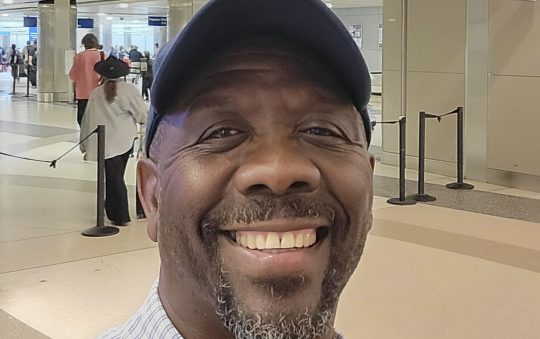 MaggieWalker.jpg)
Maggie Lena Walker
ESpurlockSampson.jpg)
EDITH SPURLOCK SAMPSON
*** Legends ***
by Yussuf J. Simmonds
TWO BLACK WOMEN WHO PAVED THE WAY
“They set the tone and blazed the trail for all professional women”
MAGGIE LENA WALKER (1867 – 1934)
Maggie Walker was the first woman to found a bank in the United States. She also established the Saint Luke Emporium, a department store located in the Jackson Ward section of Richmond and was a leader in the Richmond Black community.
She was born Maggie Lena Mitchell to Elizabeth Draper Mitchell, a former slave and a White man, Eccles Cuthbert. Early in her life, her mother married William Mitchell who was also a former slave. Her parents worked in the home of an abolitionist and after a few years of exemplary service, they were freed. Maggie’s stepfather (Mitchell) got a job as a “maitre d” at a prominent hotel and the family moved into a small house nearby.
At an early age, Maggie’s stepfather was killed and she had to help her mother do the laundry business in order to take care of her and her brother. Maggie Mitchell attended Lancaster School and then the Armstrong Normal School where she graduated in 1883. At age fourteen, she became a member of the Grand United Order of St. Luke, an African-American fraternal and cooperative insurance society that had been founded in 1867 by a former slave, Mary Prout, in Baltimore.
Maggie taught at her alma mater, the Lancaster School, until her marriage in 1886 to Armstead Walker, Jr., a building contractor. After having three sons, she went to work part time as an agent for an insurance company, the Women’s Union, while attending night school for bookkeeping. She also volunteered at St. Luke and eventually worked her way up in 1889, to become the executive secretary-treasurer of the renamed organization, the Independent Order of St. Luke.
Walker started publishing the St. Luke Herald in 1902 to publicize and promote the order. In 1903, she opened the St. Luke Penny Savings Bank and became its first president. She had often dreamed of turning “nickels into dollars” by pooling money and then lending it out at reasonable rates. Hers was a dream fulfilled for she reasoned if Black people put their money together and “loan it out among ourselves then the interest will be ours.” And it worked. She earned the recognition of being the first women to charter a bank in the United States.
The bank severed relations with St. Luke fraternal order and then merged with two other Black banks to form the Consolidated Bank and Trust Company. She became the chairwoman of the board. Walker supported many charities and organization that worked to better the quality of life of Black people such as the Urban League, the Virginia Interracial Committee and the NAACP.
In 1904, she bought a house consisting of nine rooms and eventually expanded it to 22 rooms, installing central heating and electricity. Her son, Russell, accidentally shot and killed her husband, his father in 1915, and thereafter he suffered long bouts of depression; he died in 1923. Her mother and her (Walker’s) son both lived with her. There were other tragedies in her life from which she never fully recovered. Walker fell and injured her kneecap in 1907 causing her to use a wheel chair, and in addition she also suffered from diabetes. She had to install an elevator in her house for her convenience and had her car adjusted to accommodate her wheel chair.
She died in her Richmond, Virginia home on East Leigh Street that has since become the Maggie L. Walker National Historic Site and was buried in Evergreen Cemetery, Richmond. The historic site still contains the original furnishings. The Consolidated Bank and Trust Company is still in existence today, and is the oldest continuously operating Black bank in the U. S.
EDITH SPURLOCK SAMPSON (1898/1901 – 1979)
Edith Spurlock was born to Louis and Elizabeth Spurlock in Pittsburgh, Pennsylvania on/about October 13, 1898/1901. (There is a discrepancy about the correct year of her birth). She was one of seven children and nothing was wasted or taken for granted in the Spurlock’s home. At the age of fourteen, in the eighth grade, Spurlock left school to work in a fish market to help her parents financially. However, she did graduate from Peabody High School.
Through the efforts of her Sunday school teacher and the Associated Charities of Pittsburgh, Spurlock was afforded the opportunity to attend the New York School of Social Work where she distinguished herself in her criminology class. This led to her being encouraged by Columbia University law professor, George W. Kirchwey, to embark upon a legal career. He reportedly told her, “You are in the wrong field.” But before her legal studies were to have begun, she married Rufus Sampson, a field agent for Tuskegee Institute, Alabama.
Shortly after finishing her undergraduate work, the newlyweds moved to Chicago where she worked for the Young Women’s Christian Association while doing postgraduate studies at the University of Chicago School of Social Service Administration. Sampson then took a job as a social worker with the Illinois Children’s Home and Aid Society.
Around 1922, she enrolled in the night school program at John Marshall Law School. For the first year, she was the only Black and the only woman student. The white male students made studying very difficult for her, but she prevailed and eventually received a special commendation for receiving the highest grade in her jurisprudence course. She divorced Rufus Sampson but used the “Sampson” surname for the rest of her life.
She graduated from law school in 1925, but subsequently failed the Illinois bar exam. She said it was “the best thing that could have happened to me.” Sampson enrolled in Loyola Law School graduate degree program and became the first woman to receive a Master of Laws. She was admitted to the Illinois bar in 1927. In 1934, she was admitted to practice before the U.S. Supreme Court and married Joseph Clayton who joined her law firm. Along with Georgia Jones Ellis, a fellow alumna from John Marshall Law School, Sampson helped to break the color line in the National Association of Women Lawyers. She was appointed assistant state’s attorney in Cook County in 1947.
She was active in numerous organizations, including the NAACP, the Chicago Urban League, National Council of Negro Women (NCNW), the League of Women Voters and the Afro-World Fellowship. Her activities led to her participation in a world tour as part of America’s Town Hall representing NCNW. She was severely criticized by civil rights groups for the way she represented the oppression of Blacks to audiences abroad. As a result of her speeches on American’s racial policies, President Harry Truman appointed her as the first alternate delegate to the United Nations. She served in several capacities in the U.N. and abroad, representing the U.S. from about 1950 to 1962.
Her husband died in 1959. This caused her to gradually withdraw from the rigors of the U.N. After leaving the U.N., she was elected to the Chicago Municipal Court becoming the first Black woman to be elected as a judge in the United States. In 1966, she she was elected to the Cook County Circuit Court.
Sampson retired from the bench in 1979 and died the following year.






